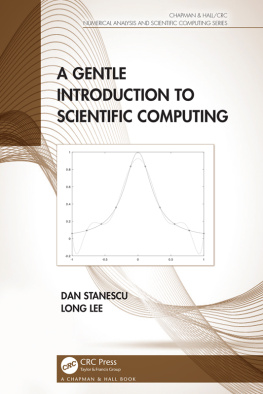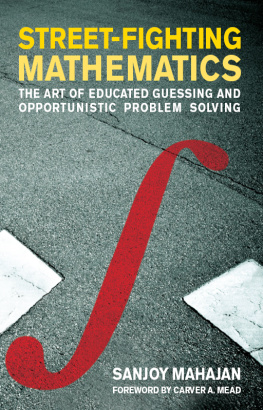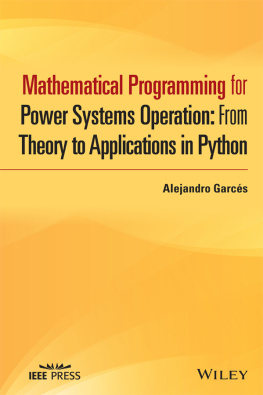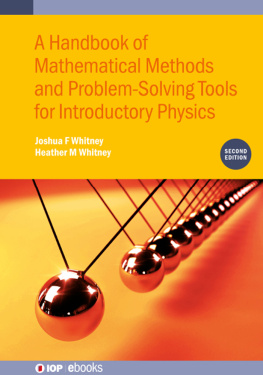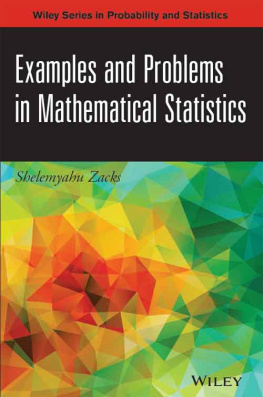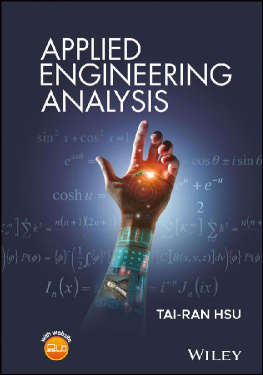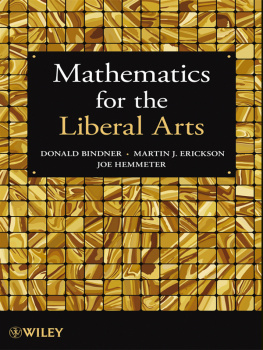Contents
List of Figures
Guide
Pagebreaks of the print version
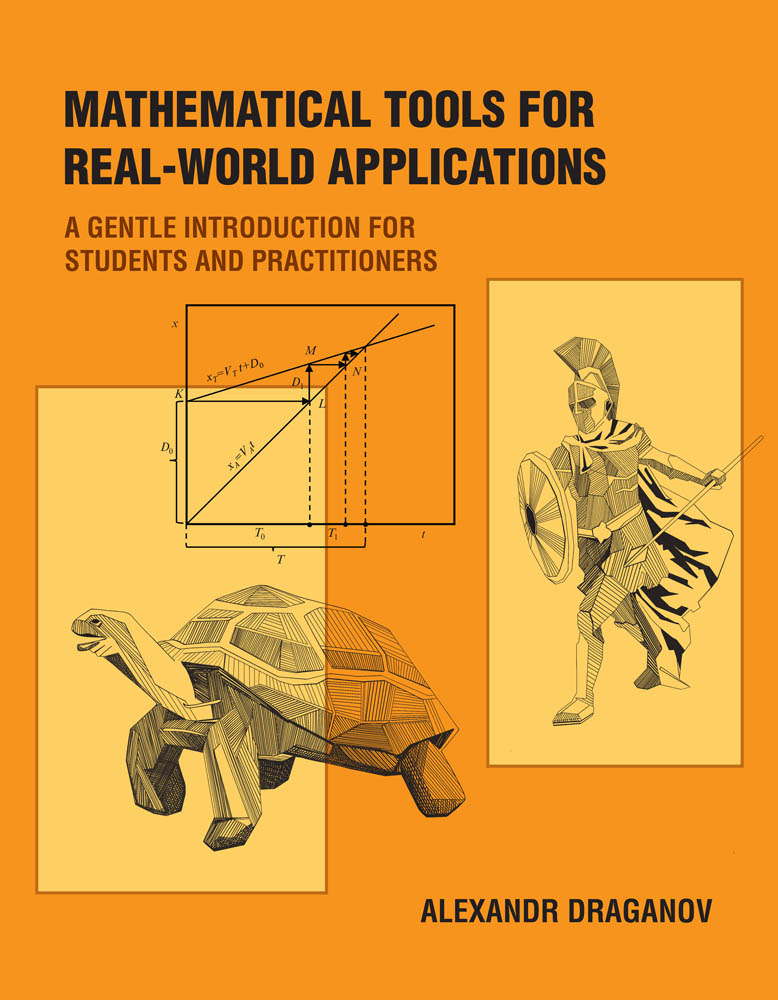
Mathematical Tools for Real-World Applications
A Gentle Introduction for Students and Practitioners
Alexandr Draganov
The MIT Press
Cambridge, Massachusetts
London, England
2022 Massachusetts Institute of Technology
All rights reserved. No part of this book may be reproduced in any form by any electronic or mechanical means (including photocopying, recording, or information storage and retrieval) without permission in writing from the publisher.
The MIT Press would like to thank the anonymous peer reviewers who provided comments on drafts of this book. The generous work of academic experts is essential for establishing the authority and quality of our publications. We acknowledge with gratitude the contributions of these otherwise uncredited readers.
Library of Congress Cataloging-in-Publication Data
Names: Draganov, Alexandr, author.
Title: Mathematical tools for real-world applications: a gentle introduction for students and practitioners / Alexandr Draganov.
Description: Cambridge, Massachusetts: The MIT Press, [2022] | Includes bibliographical references and index.
Identifiers: LCCN 2021046200 | ISBN 9780262543965 (paperback)
Subjects: LCSH: Mathematics. | Problem solvingMathematical models.
Classification: LCC QA39.3.D73 2022 | DDC 510dc23/eng/20211119
LC record available at https://lccn.loc.gov/2021046200
d_r0
To Luda
The reader who follows my drift with sufficient attention will easily see that nothing is less in my mind than ordinary Mathematics, and that I am expounding quite another science, of which these illustrations are rather the outer husk than the constituents. Such a science should contain the primary rudiments of human reason, and its province ought to extend to the eliciting of true results in every subject.
Ren Descartes, Rules for the Direction of the Mind
Indeed, I have found that it is usually in unimportant matters that there is a field for the observation, and for the quick analysis of cause and effect which gives the charm to an investigation.
Arthur Conan Doyle, The Adventures of Sherlock Holmes
Contents
List of Figures
Two hikers on a trail: units
A circle and a straight line: units
Designing satellite coverage: units
Law of sines and law of cosines: units
Archimedess spiral: units
A circle and an ellipse: units
A triangle, an inscribed circle, and a circumscribed circle: units
Two hikers on a trail: limiting cases
The quadratic equation: limiting cases
A circle and a straight line: limiting cases
Parameter domains for the sum and for the difference of two radicals
A circle inscribed in a right triangle: limiting cases
Small and large angles for a right triangle with an inscribed circle
Designing satellite coverage: limiting cases
Two circles inscribed in an angle: limiting cases
A circle and a parabola: limiting cases
Detecting an error in the circle and parabola problem
Linear regression: limiting cases
A spherical cap: limiting cases
Law of cosines: limiting cases
Detecting a vessel by two radars: limiting cases
A torus: limiting cases
Archimedess spiral: limiting cases
A circle and an ellipse: limiting cases
A circle and a hyperbola: limiting cases
A triangle, an inscribed circle, and a circumscribed circle: limiting cases
Symmetry in the fall of Newtons apple
Two hikers on a trail: symmetry
Waves in a pond and on a beach
Changing a variable to impose symmetry
A circle and a straight line: symmetry
A circle inscribed in a right triangle: symmetry
Designing satellite coverage: symmetry
Two circles inscribed in an angle: symmetry
Linear regression: symmetry
A spherical cap: symmetry
A circle inscribed in a right triangle: symmetry
Herons formula: symmetry
A triangle, an inscribed circle, and a circumscribed circle: symmetry
A circle and a hyperbola: symmetry
Two hikers on a trail: symmetry
Archimedess spiral: symmetry
A circle and an ellipse: symmetry
Detecting a vessel by two radars: symmetry
The Pythagorean theorem and a scaling argument
Scaling of light intensity with the distance from the source
The universe in Olberss paradox
Rope tension on a capstan for a small angle
Linear regression: scaling
A torus: scaling
A spherical cap: scaling
Rectangle inscribed in a right triangle: scaling
A circle and an ellipse: scaling
Archimedess spiral: scaling
Two circles inscribed in an angle: scaling
Monthly mortgage payments as a function of the interest rate
A spherical cap: order of magnitude estimates
A torus: order of magnitude estimates
Archimedess spiral: order of magnitude estimates
Achilles and the tortoise: an algebraic solution
Achilles and the tortoise: an iterative solution
Convergence criterion for the MSA
The product of two linear expressions: successive approximations
The quadratic equation: successive approximations
Archimedess spiral: successive approximations
Designing satellite coverage: successive approximations
A circle and a parabola: successive approximations
Criteria for h for the circle and parabola problem
A small quadratic term in the circle and parabola problem
Approximations for detecting a vessel by two radars
CCPDF for the roulette game
Airplane landing error
Airplane landing: shift invariance
CCPDF for the GPD and the normal distribution
The step function
Step functions as building blocks for a general input
A PLL response to a step function input
PLL responses for two different values of fN
Distances traveled by two hikers on a trail
The intersections between a circle and a straight line
The intersections between a circle and an ellipse
The intersections between a circle and a hyperbola
The intersections between a circle and a parabola
Designing satellite coverage
Detecting a vessel by two radars
Two circles inscribed in an angle
A circle inscribed in a right triangle
A rectangle inscribed in a right triangle
A spherical cap
Linear regression
List of Tables
Base units for physical quantities
Units for the coefficients in the car deceleration formula
Units for various terms in the cubic formula
Parallel solutions of two related problems
Symmetry in the quadratic equation
The hierarchy of scaling behaviors
Successive approximations for the product of two linear expressions
Convergence for the quadratic equation
Convergence for the turn angle of Archimedess spiral
Convergence for the satellite coverage problem
Intersection of a circle and a parabola (a small linear term)
Intersection of a circle and a parabola (a small quadratic term)
Approximations for parameter
Time required to reach the vicinity of the exact value by the PLL
Preface
Real scientific or engineering problems are often different from textbook ones and take a different set of tools, for two reasons.
First, real problems are usually messier and take longer to solve. A good sprinter is not necessarily a good marathoner; similarly, a long solution requires a different set of skills than a short one. You must plan out an approach in advance, break it up into manageable segments, and devise ways to check your work along the way. In math, this starts from understanding your problem well.


